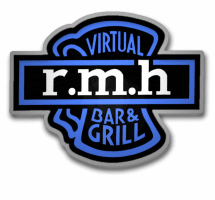rec.motorcycles.harley
General
Philosophical
Synthetic
Oil
Technical
Wrenching
Dyna Frame
Bad Vibes
Rake and Trail
TC88
Cam Specs
Carburetors
Extracting Broken Screws
Fuel Injection Intro
Heads -- Evo BT
Heads -- Shovel
Hop-up Suggestions -- BT
Hop-up Suggestions -- 883
Ignition
Lighting Mods
Neat Stuff
Oil Cooler Fans
Packin' (tools)
Painting & Finish Maintenance
Pipes
Replacement Seats
Roadside Electrical Troubleshooting
Shocks
Tire Specifics
Tranny Lube
Riding
Buying
Selling
History
Harley
.net Resources
Et
cetera
Design and content © 2004
Mild Bill (Asshole #27)
StephG (Asshole#108)
r.m.h VB&G logo design © Jim Combs
Revisions/updates ©2012
Keeper of the FAQ's
Schmoe (Asshole #128)

Rake and Trail
Rake is the angle between the headset tube and a vertical line. Increasing the rake will move the front tire farther from the bike. Rake is measured in degrees, and is a frame specification. To visualize trail, draw an imaginary line along the path of the headset tube to the ground. Measure from this point to the center of the tire patch. This is trail, and is measured in inches.
The amount of rake is significant in determining a motorcycle's handling characteristics. In general, more rake provides greater straight line stability, less rake makes the bike more responsive. Larger values of trail also create more straight line stability. This is why the forks on a sportbike are more vertical than those of a cruiser.
Visualize the wheels of a shopping cart for an illustration of a machine with zero rake and a lot of trail. Exciting handling, but zero straight line stability.
People frequently inquire about using so called "raked trees",
which don't actually affect rake at all, rake is built into the steering
head angle, but rather it offsets the front axle and cosmetically gives
the forks a raked look while reducing trail. For a good illustration and
explanation of rake and trail, how to measure it and figure out whether
you're going to get yourself in trouble, check out the
Swedish side below (for the Metrically Inclined)
http://www.tolle.se/sidxpage.php?id=962&typ=sidaHere's a handy Rake and Trail Calculator. The illustration shows two neck rake angles to illustrate raked trees. They probably did this because the drawing would be even more confusing if they drew a second set of forks, a wheel moved forward with the axle moved forward (as is the case with trees that have positive offset). This should help settle arguments about how much "rake" or angle offset in trees is acceptable before handling becomes a dangerous issue. Just enter the numbers in the calculator and your question is answered.
Explanations aside, the calculator appears to work great, but I'd still "measure twice and cut once" with a ruler and protractor:
http://www.rbracing-rsr.com/rakeandtrail.html